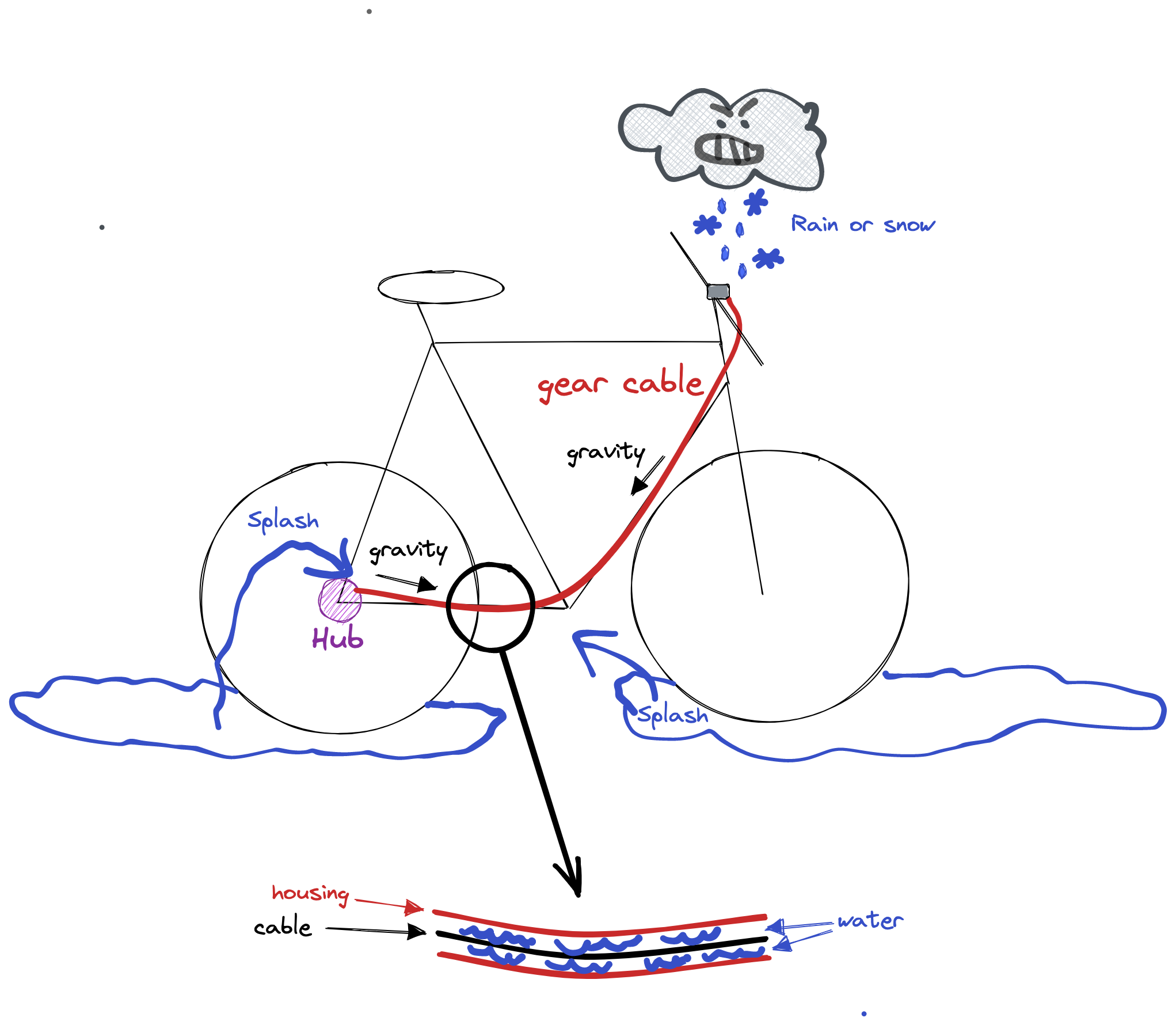
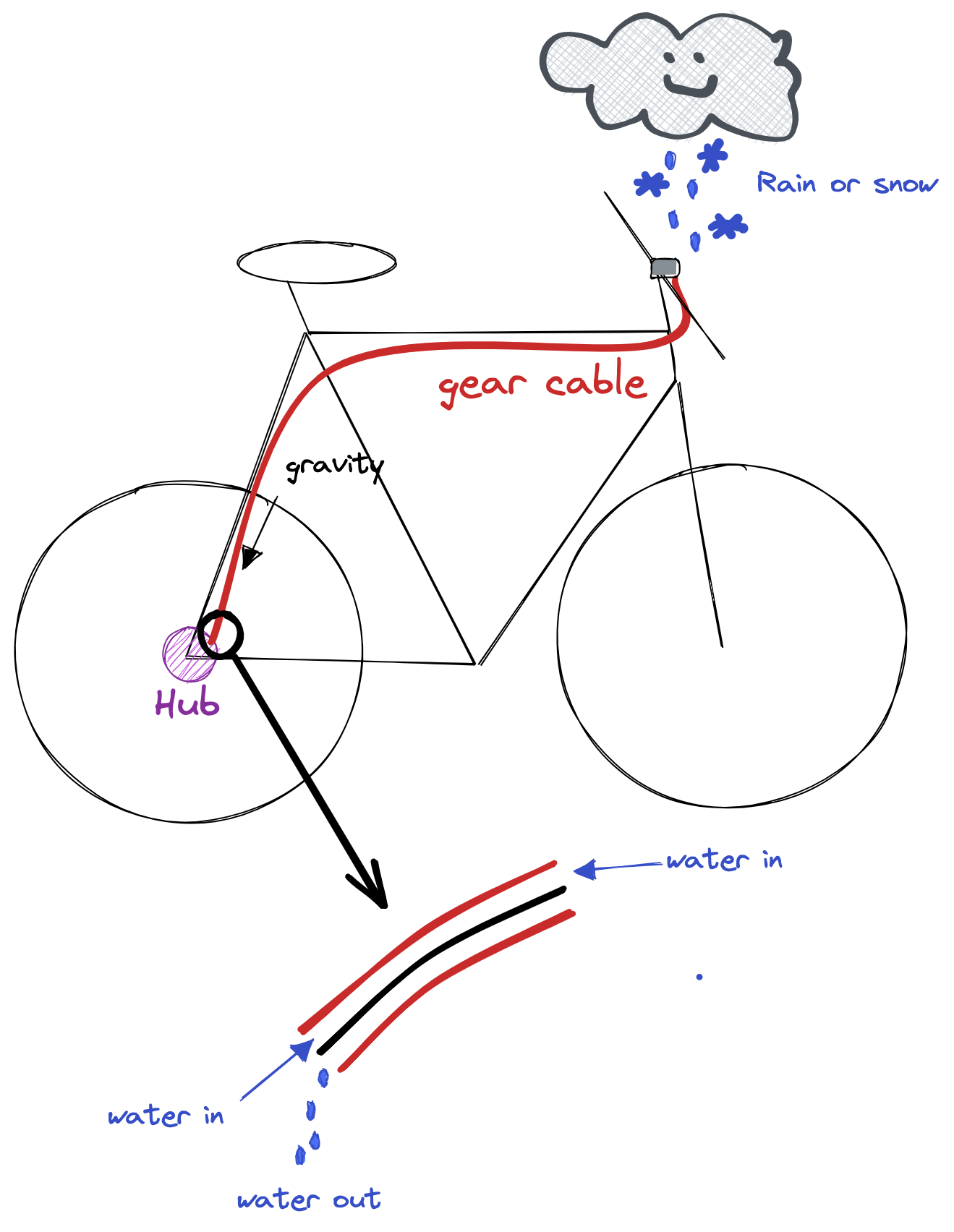
continuous downwards slope!
Most winter cyclists have probably gone through this at least once. You pull your brake levers or try to shift gears but cables are not responding and won't move. There are a few possible causes, but in my experience a stuck cable is usually a symptom of water that managed to get trapped inside of the cable housing.
This section will describe my experience with this situation and how one can minimize this problem with the equipment I am familiar with.
TL; DR: Water in cables is the winter cyclist's #1 enemy. Route your cables with downwards slopes and use cable boots to minimize issues.
I ride a bike equipped with a Shimano Alfine 8-speed internal hub. The first year I had this bike, the hub operated perfectly until the first cold spells happened. Typically, the symptom was that the gears wouldn't shift well or at all. On this hub, downshifting means pulling the cable away from the hub by applying strength on the lever, and upshifting means giving some slack to the cable so that the hub springs might pull it back towards the hub.
Sometimes downshifting was possible by pulling very hard on the lever. However, once I had downshifted this way I could not shift back up because the hub springs were simply not powerful enough to move the cable back. On a few occasions, I found myself having to ride on the 1st or 2nd gear the whole commute, which was not great. This even sometimes combined with non-functional hydraulic brakes, which really set the stage for a tough ride!
Problems with shifting seemed to happened more frequently when below-freezing temperature followed above-freezing ones. Bringing the bike inside a heated area would fix the problem temporarily (say for the first 10 minutes of riding), but then the shifter would start being hard to use again.
When reporting the issue to the LBS, I was given common advices such as lubricating the cable. The shop tried that but it didn't really help much with the situation.
The Shimano hub uses full-length cable housing running from the shifter to the hub. Some research led me to believe that the situation was caused by water entering the cable and getting trapped. The way my cable was routed, there was a low spot where water might accumulate. Once the water was in there, it would freeze and block the operation of the cable until it was manually removed.
This made sense with the symptoms I was getting. The bike would operate well in the summer or in the first 10 minutes after taking it outdoors, but not when left in the cold for a long time. The LBS fixed the immediate problem once by removing the cable and blowing the water away from the housing, but it occurred again some time later.
The solution to the water issue was to convert the cable routing from what is shown in the left-hand side picture below into the situation on the right-hand side.

|

continuous downwards slope! |
On the picture on the left, water that is splashing from the street or incoming from above and entering the cable housing gets pulled by gravity towards a low spot somewhere along the horizontal chain stay at the bottom of the frame.
On the right, however, the gear cable has been routed such that water that might find itself entering the housing will naturally flow back out.
While the previous illustrations make sense in theory, how does one make the necessary modifications in practice? It turns out that with the Shimano Alfine 8 hub, this is a relatively simple operation that can be done with basic mechanical skills or with the help of a LBS. This solution was proposed by the head mechanic of Dumoulin Bicyclettes, the LBS where I had bought my bike.
The Alfine 8 hub comes with blue and green non-turn washers that hold it at a fixed angle and keep it from spinning with respect to the frame. Normally, the blue washer is installed on the right-hand side and the green one on the left. This configures the hub such that the arm that receives the gear cable is horizontally aligned with the chain stay.
Interestingly, by swapping the two washers, it is possible to install the hub such that the arm is aligned almost exactly with the seat stay instead!
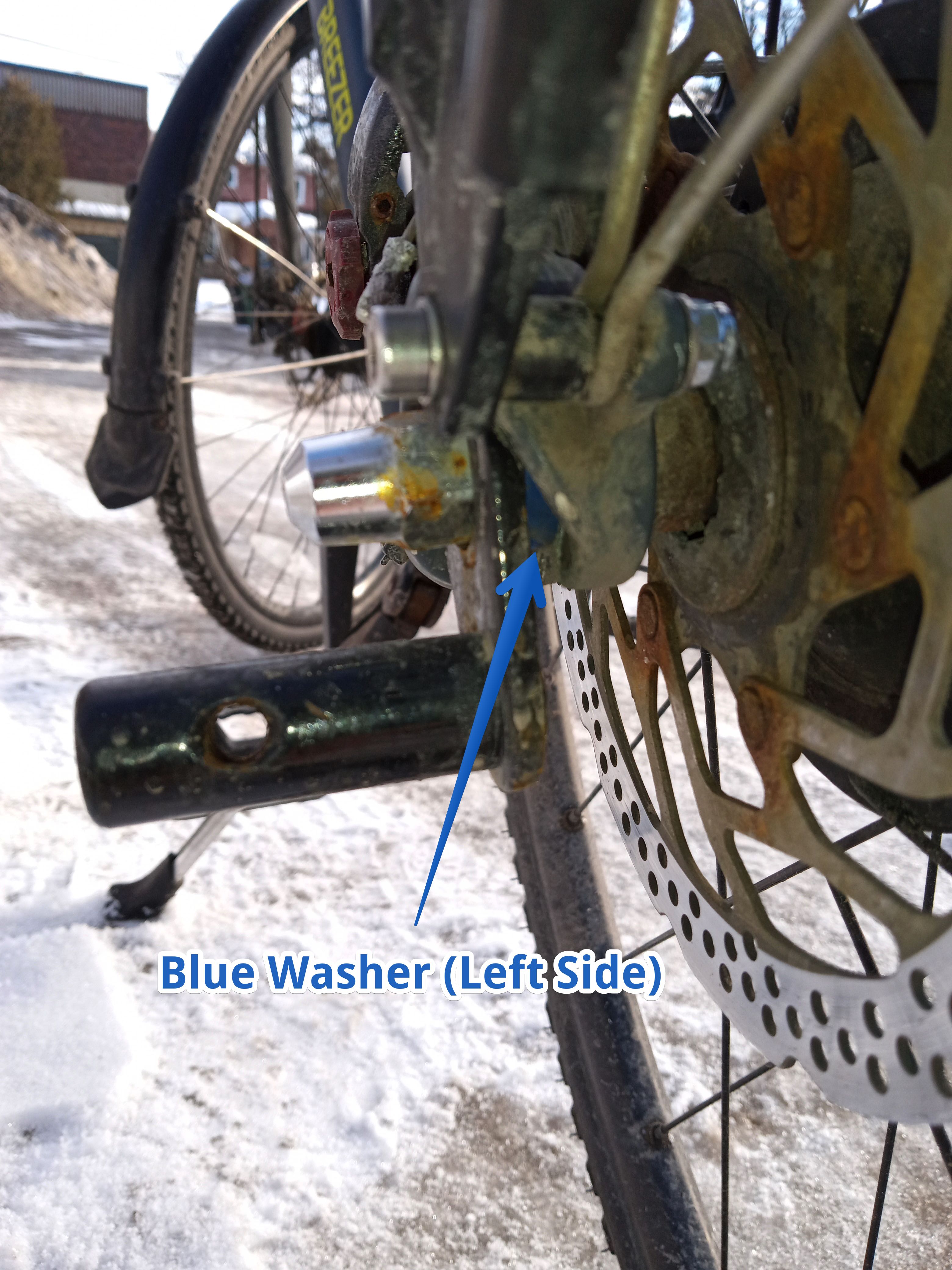
|
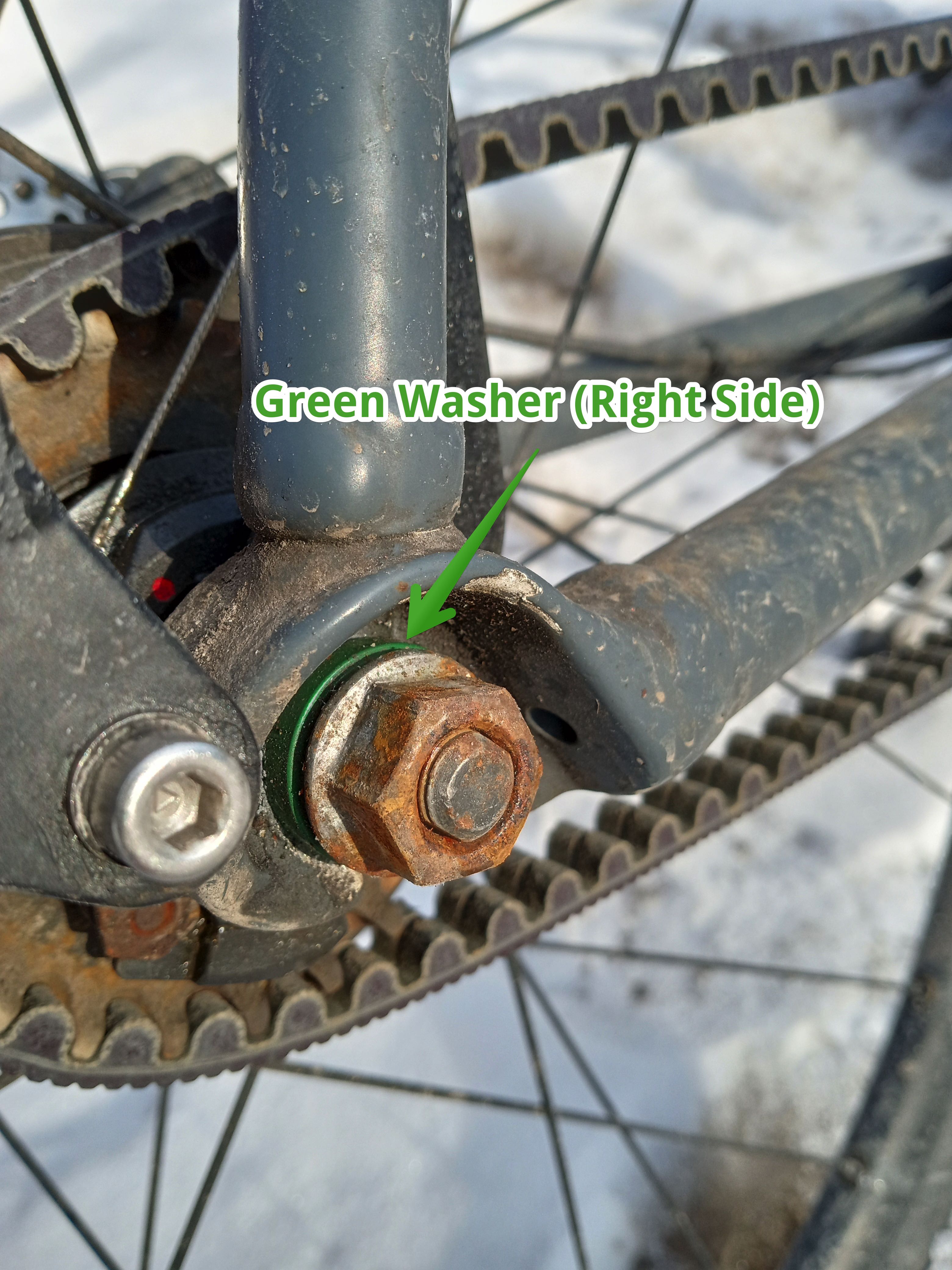
|
I don't know if that is a purposeful design from Shimano, but this neat trick makes a very easy fix to this common problem. Either way, I must thank Shimano and my mechanic who suggested the swap!
The last part of the modification is simply to re-route the gear cable along the seat stay and the top tube. Equipped with those instructions, any LBS can easily make that fix. It might make the bike slightly less pretty and the cable might have to be attached with tie-wraps but hey, you'll have functioning gears 365 days a year. Well worth it if you ask me!
Now, you may wonder if the new cable route might not create a low spot near the lever instead. In my case, the cable goes horizontally or might have a slight low point around where it leaves the frame to reach the lever. In practice I found out that it does not create any problem. I believe that most of the water enters from the lower end of the cable near the hub and that water entering from above is minimal.
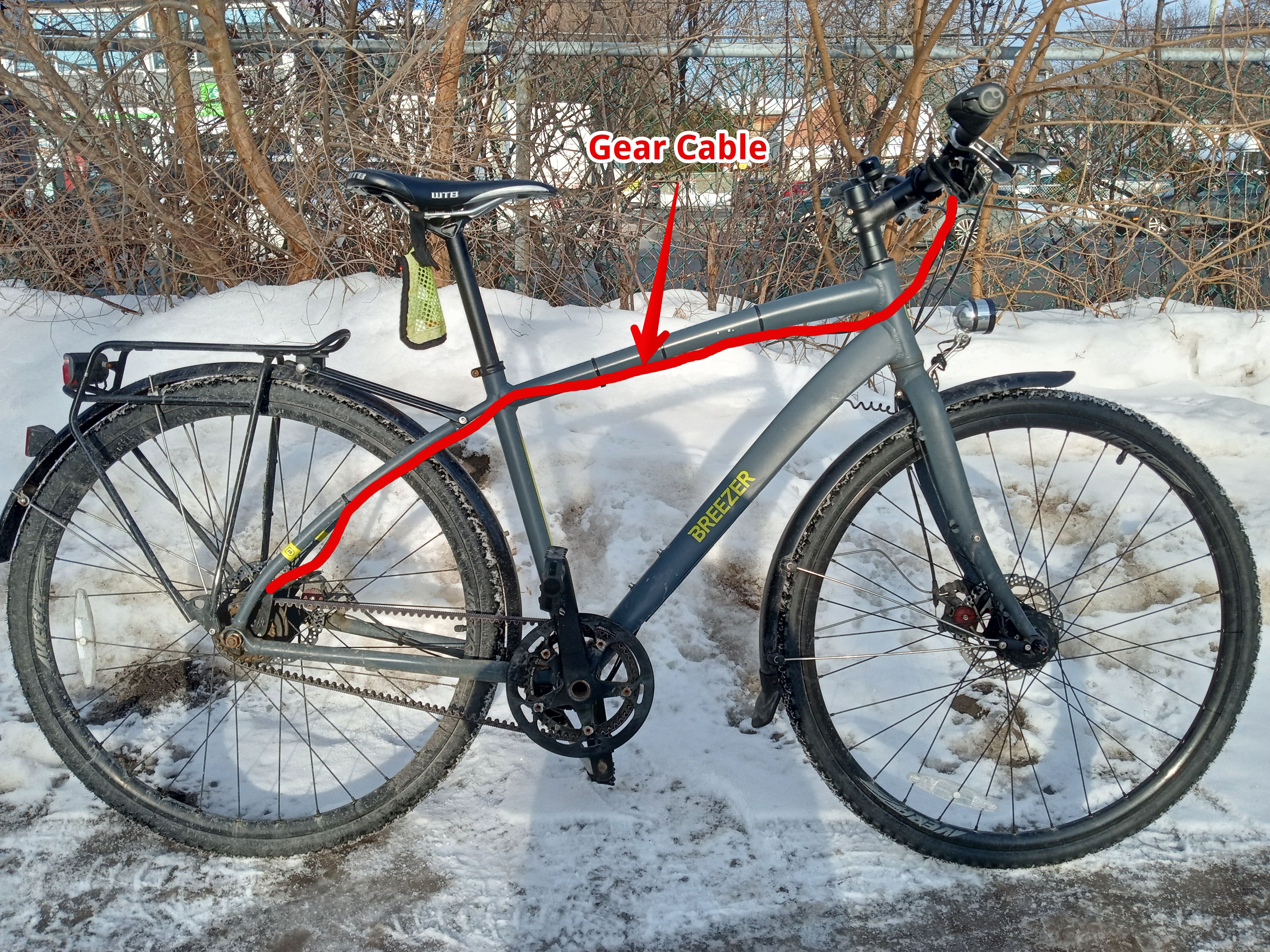
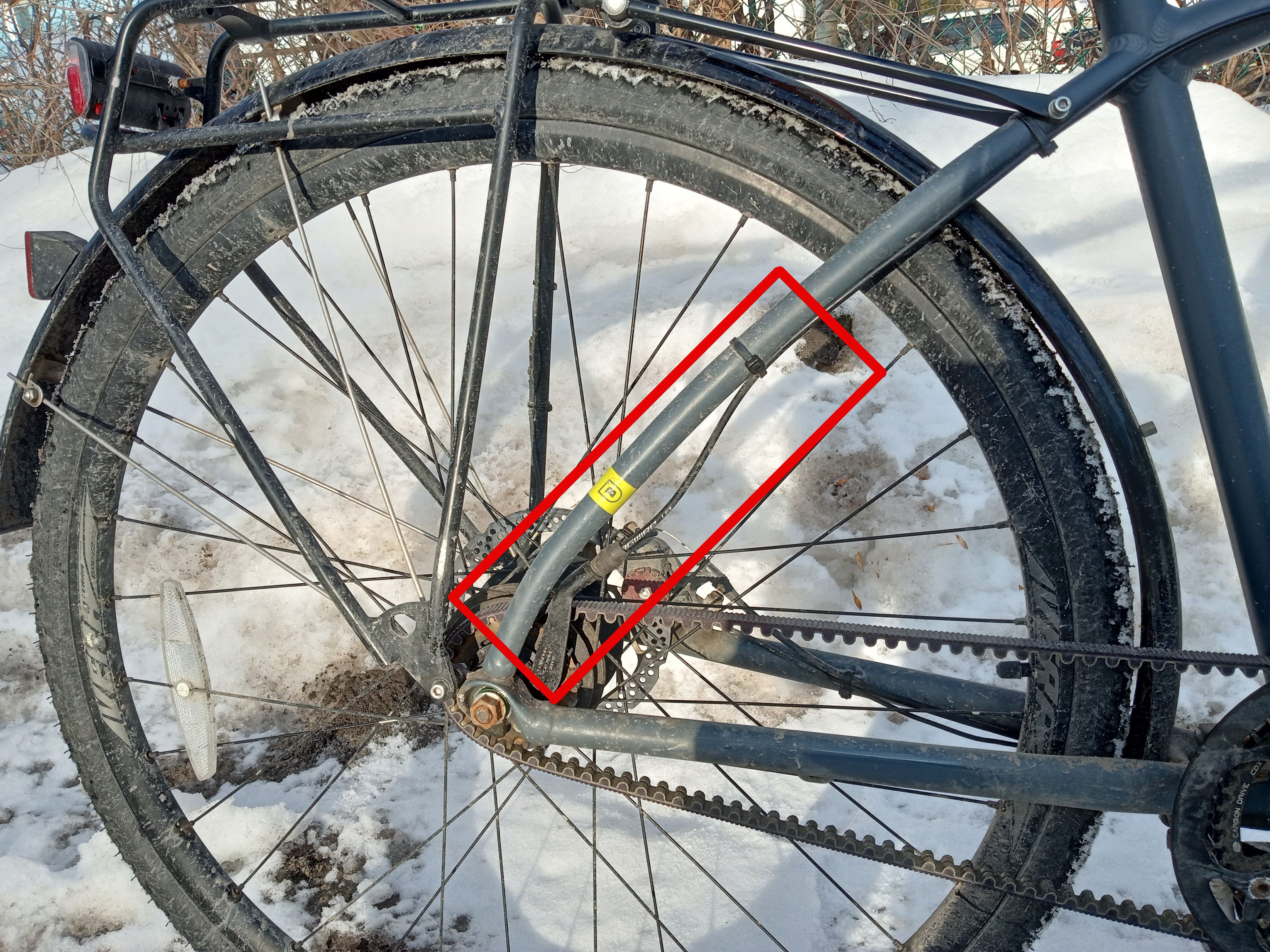
Regarding brake cables, frozen water stuck inside may prevent brakes from being pulled and cause safety hazards. In practice, I have found that water inside of brake cables creates less problems than with gear cables. Usually, when brake cables are stuck, pumping the brakes really hard a few times gets them unstuck. There is no "giving slack" movement such as with gear cables that can be impeded by frozen water, such that you always have your full strength to get them unstuck.
Regarding parts, I use Avid BB7 disc brakes which have full-length housing and a cable boot at the end. Full disclaimer: I selected those over the similar and slightly cheaper BB5 just because of the boot which the BB5 lack. I had such a bad experience with my gear cable that I wanted to make sure it would not repeat with the brakes.
Unfortunatly, with disc brakes there is no option to change routing angles and on my bike the rear cable has a low spot near the caliper, because it routes the cable along the chain stay. The rear brake cable is visible on the hub close-up picture on the far side of the rear wheel.
Nevertheless, the cable boot seems to be doing a good enough job of keeping water away.
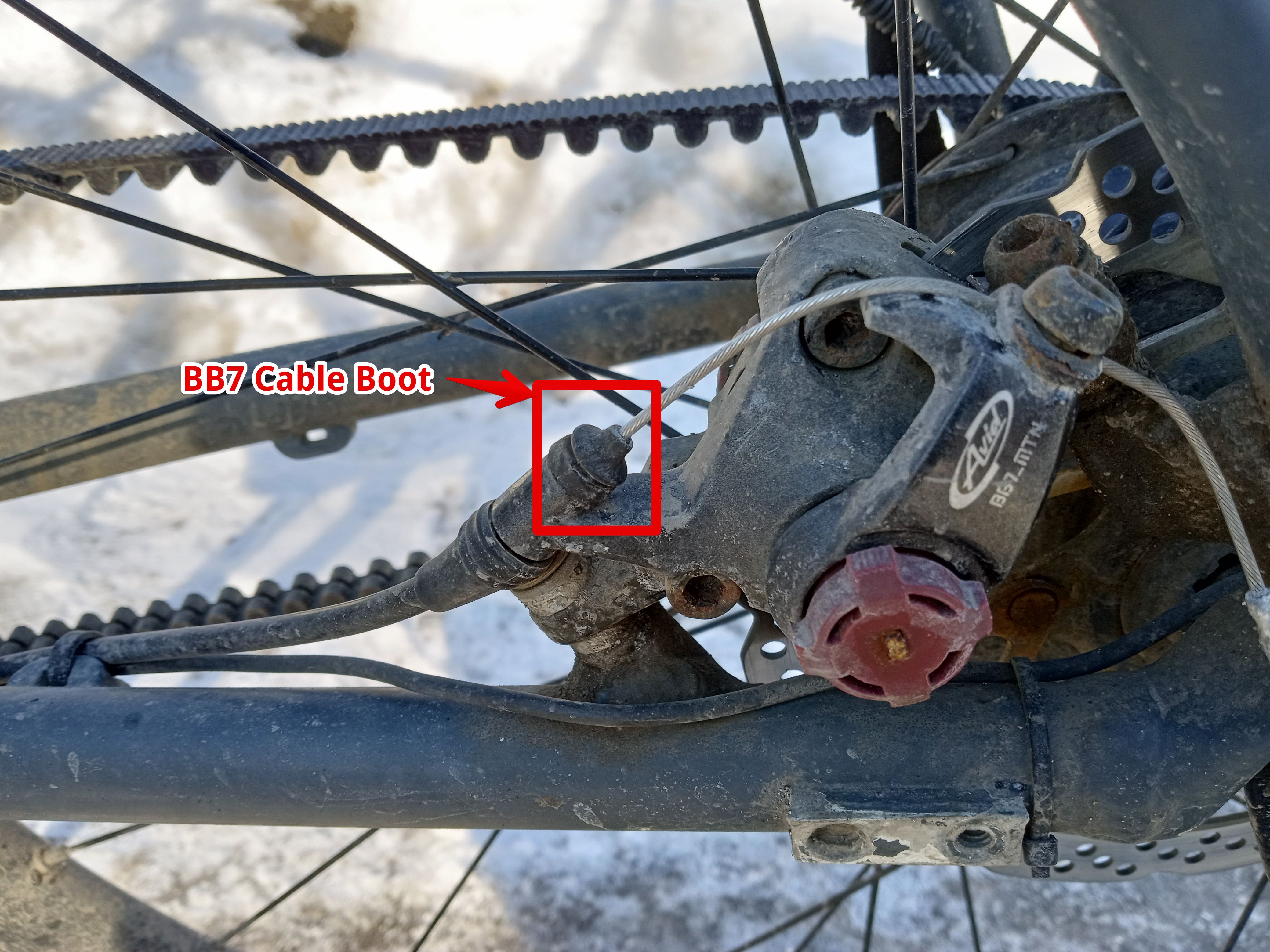
In summary, with the BB7 and the boot properly positioned I rarely get issues with my cables except in extremely cold weather such as below -20 ℃. In that case I suspect some other issue at play, maybe cable stiffness due to the cold, because cables operate fine if the next day is milder even though below freezing.
One last note about the cable boot: on the BB7 it does not look strongly attached and might sometimes move out of place. Inspect it regularly to make sure it does its job!
When water in cables is suspected, it might be tempting to move the bike inside in the hope that it will "warm up" and dry. In this situation, any "fix" that is introduced by heating the bike will be temporary and revert itself once the bike is ridden outside for a few minutes when the water freezes back.
Sometimes, by hanging the bicycle vertically in a heated location (using a wall mount in the house for example), water that accumulated in the cable that might otherwise stay frozen if the bike was stored outside will melt and drop during the night. The bike will then be great to use on the next day! I once had a colleague who was commuting with the same bike as I was. Frustratingly, I would experience water in the cables and he wouldn't. I was puzzled by this until I realized that he was storing his bike vertically inside his flat while I was leaving it in an unheated location. Although I never tried it myself, I gave this trick to a few people and it seems to help them with this issue.
Regarding the option to blow the water out: it will work until water reenters, but you're not going to do this 10 times per winter. Besides, once the cable is pulled out of the housing, it might not be possible to place it back if the ending is too worn out and you'll need to replace it. Please only take your cable out if you have a replacement handy, or you'll have to skip on biking for the next days until you replace it!
This section described my experience with the Shimano Alfine 8 internal gear hub and Avid BB7 brakes using full-length housing cables. Full-length housing is good in general because it provides additional protection to your cables but it is not often installed in a winter-proof way. I find that with these two parts properly installed with downwards slopes or cable boots, I have a minimum amount of issues with my cables.
There is no need for lubricating or any other maintenance tasks with such equipment and the bike is usable 365 days a year. I do not have experience with other internal hubs or mechanical disc brakes but the main idea described here should apply to other parts. If suspecting water in your cables, inspect how the routing of the cable is done on your bike. In case this is the issue, ask your LBS for a fix to make sure the slopes are downwards and there is no low point.